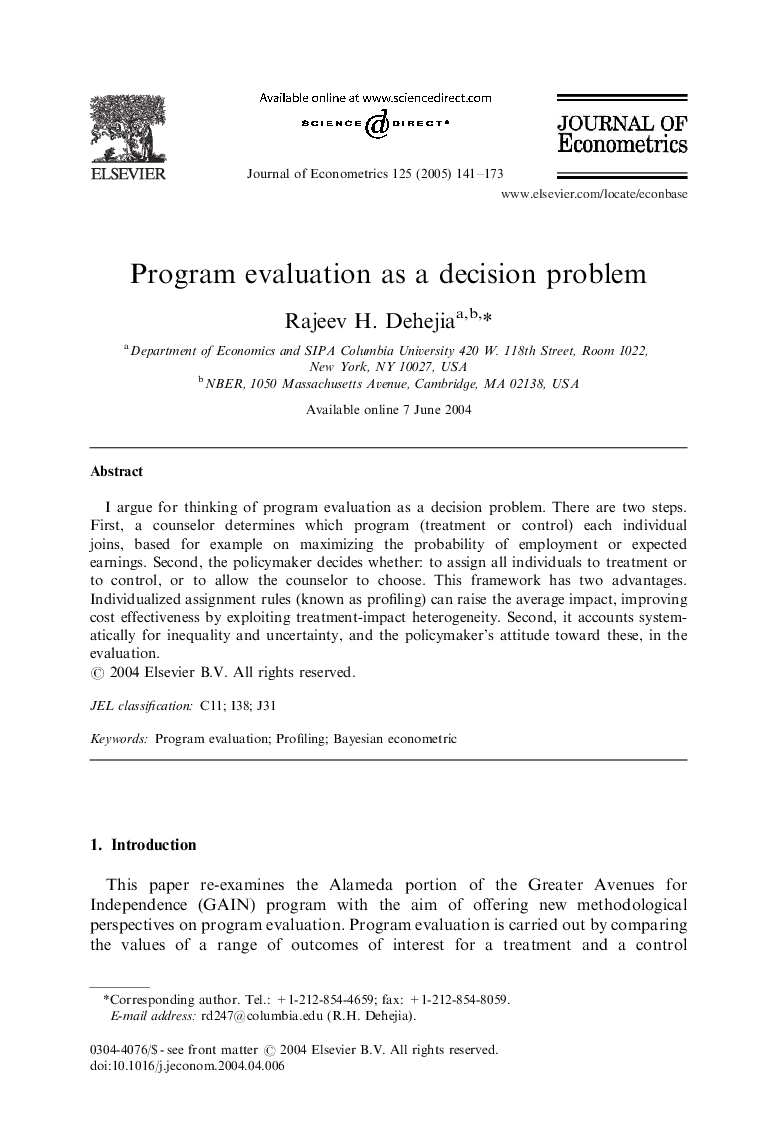| Article ID | Journal | Published Year | Pages | File Type |
|---|---|---|---|---|
| 9555352 | Journal of Econometrics | 2005 | 33 Pages |
Abstract
I argue for thinking of program evaluation as a decision problem. There are two steps. First, a counselor determines which program (treatment or control) each individual joins, based for example on maximizing the probability of employment or expected earnings. Second, the policymaker decides whether: to assign all individuals to treatment or to control, or to allow the counselor to choose. This framework has two advantages. Individualized assignment rules (known as profiling) can raise the average impact, improving cost effectiveness by exploiting treatment-impact heterogeneity. Second, it accounts systematically for inequality and uncertainty, and the policymaker's attitude toward these, in the evaluation.
Keywords
Related Topics
Physical Sciences and Engineering
Mathematics
Statistics and Probability
Authors
Rajeev H. Dehejia,
